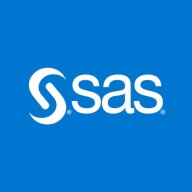

SAS Access and Peregrine are competitive products in the data analytics and integration domain. While SAS Access has an edge in pricing and support, Peregrine leads with its robust features.
Features: SAS Access provides strong data integration capabilities and seamless connectivity with various databases and platforms. It integrates effectively with existing systems. Peregrine has advanced analytics features and intuitive navigation for insightful data visualizations, giving it a significant edge.
Ease of Deployment and Customer Service: SAS Access offers a straightforward deployment model, backed by comprehensive guides and responsive service teams. Peregrine requires a learning curve during setup but is supported by efficient customer service capable of handling complex queries. This provides Peregrine with a competitive advantage despite SAS Access's simpler deployment.
Pricing and ROI: SAS Access presents a cost-effective setup focused on maximizing resource utilization for a steadier ROI. Peregrine, despite a higher initial setup cost, provides long-term value with its features. SAS Access is budget-friendly, while Peregrine's investment in advanced features ensures improved outcomes, justifying its higher cost.

Peregrine is an advanced technological tool designed to streamline processes and drive efficiency. It is widely recognized for its adaptability and powerful features tailored to meet diverse enterprise requirements.
Peregrine provides a comprehensive range of capabilities that cater to complex business operations. Its integrative approach allows seamless collaboration, enhancing productivity by optimizing workflows and enabling data-driven decision-making. Known for its flexibility, Peregrine offers scalable solutions that support strategic growth, empowering businesses to achieve their objectives with increased agility and efficiency.
What are the key features of Peregrine?Peregrine has proven invaluable across industries such as finance, healthcare, and manufacturing. In finance, it integrates seamlessly with existing systems to provide real-time data analysis, aiding in sound investment strategies. Healthcare organizations use it for managing patient records efficiently, while manufacturing sectors rely on its robust data management to optimize supply chain operations.
We monitor all Data Integration reviews to prevent fraudulent reviews and keep review quality high. We do not post reviews by company employees or direct competitors. We validate each review for authenticity via cross-reference with LinkedIn, and personal follow-up with the reviewer when necessary.